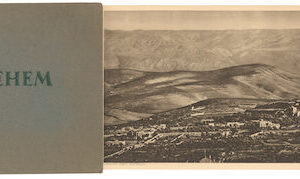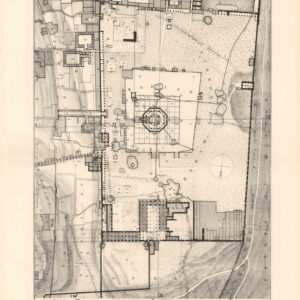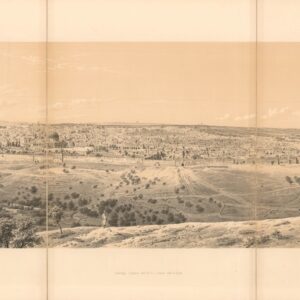1918 British Survey Map of Tripoli (Lebanon) and Surroundings.
Tripoli
Out of stock
Description
During the British Protectorate Era in the Middle East (broadly, 1882-1956), the Survey of Egypt was set up as the official state survey department in the region. Based in Cairo, the Survey of Egypt issued maps and charts of large parts of the Middle East, including the French-controlled regions of Lebanon and Syria (French mandate in Syria and Lebanon lasted from 1923 to Arab independence in 1946). These were usually interconnected multi-purpose charts showing topography, toponyms, and basic infrastructure – including features explicitly needed for military purposes.
This sheet is the Survey of Egypt map of the area around the north Lebanese city of Tripoli. Produced at a scale of 1:125.000 and printed in manageable dimensions (73 x 51 cm), the Survey of Egypt maps formed an up-to-date cartographic basis for British interests in the region. While only a few details of the actual city are rendered at this scale, several features associated with Tripoli are indicated on the map (e.g., the tramway to al-Mina or the ruined bridge to the Burjes Seba petroleum depot on the coast). Moving inland, we find numerous towns and villages correctly plotted into the landscape, many of them connected by roads of varying quality. Despite the accurate labeling of place and the inclusion of road networks, the map is essentially topographic in its expression. Lebanon’s many rivers and streams are all clearly indicated and, in most cases, labeled. Moreover, most elevations have been provided with height measurements.
The map could nevertheless also have been used as a decent road map at the time of its publication. The fact that conditions could change rapidly in this period is reflected in a note in red under the legend in the upper right corner. This note states that the road information contained on this map is relevant at least until October 1918 (i.e., shortly after the First World War). From the legend, we also learn that the thick red lines that run along the coast and wind inland to the cedar-rich region of Bsharri constitute the region’s ‘Metalled Roads.’ In the case of the interspersed red lines, these roads are only fit for transport in dry weather, while the coastal road north of Khan has been dotted in red to indicate its fitness for transporting guns and limbers. The map also includes other essential infrastructure of potential military interest, such as railways and telegraph lines and natural sources of potable water in the landscape.
It is clear from the map that, like today, the density of occupation is higher along the coast. In the hinterland behind the coastal shelf, the Lebanon Range rises prominently to form a half crescent separating the coastal urbanites from their rural neighbors in the mountains. In the lower right corner of the map, we are lucky enough to have included the ancient city of Baalbek, the ruins of which still form the archaeological crown of Lebanon’s cultural heritage portfolio. The site was already renowned for the monumentality of its ancient ruins during the Victorian period, and European travelers had come to this remote place for decades (including, in 1898, the German Kaiser Wilhelm II and his wife).
This map is connected to our Survey of Egypt map of Homs and Surroundings (NL-01376).
Cartographer(s):
Survey of Egypt was the official state survey department in the period of the British Protectorate, based in Cairo.
Condition Description
Backed. Some crimping on sides.
References



